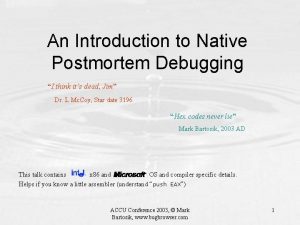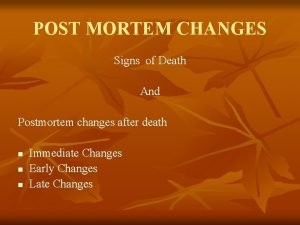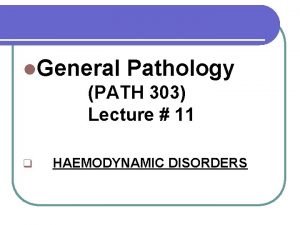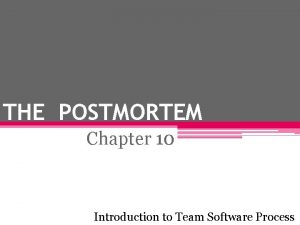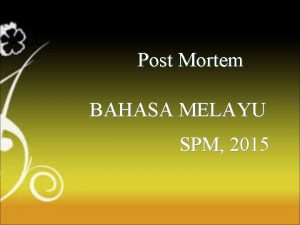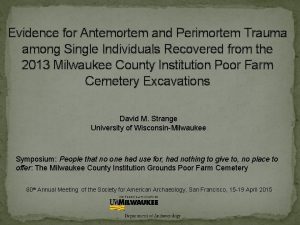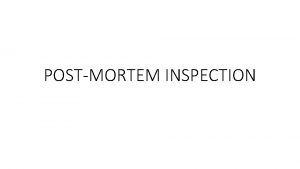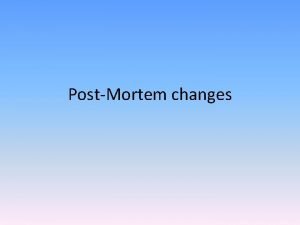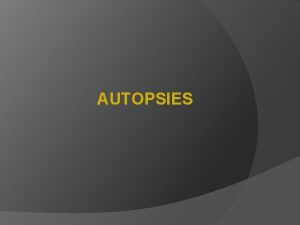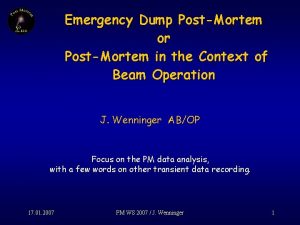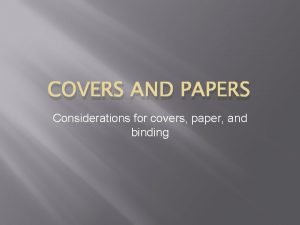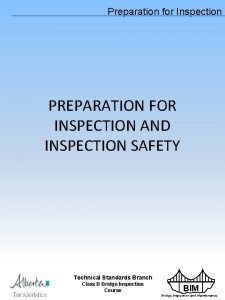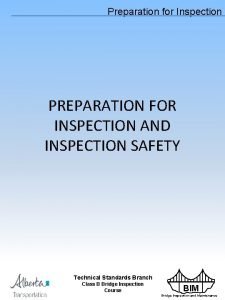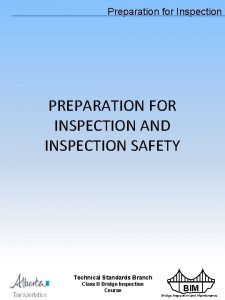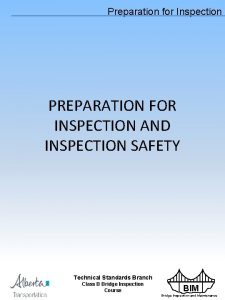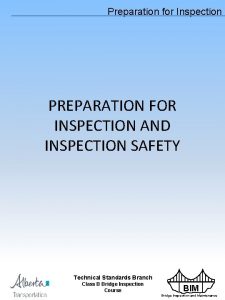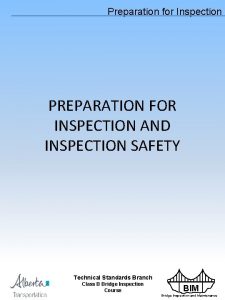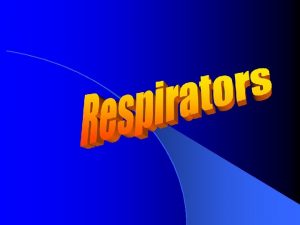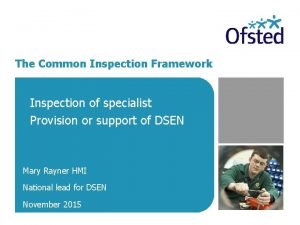POSTMORTEM INSPECTION Postmortem inspection covers the inspection of

















- Slides: 17

POST-MORTEM INSPECTION

• Post-mortem inspection covers the inspection of the carcasses and parts of meat and poultry used for human food. • It takes place after ante-mortem inspection and after the animal or poultry has been slaughtered thus the term “post-mortem, ” meaning “after death” in Latin.

• Post-mortem inspection covers the steps in the slaughter process that begin at stunning and ends at the step where the carcass is placed in the cooler

• By post-mortem inspection and the ante mortem findings, plus laboratory results if necessary, the veterinarian determines the acceptability of the carcass and parts for human food.

The purpose of post-mortem inspection is to protect the public’s health by ensuring that the carcasses and parts that enter commerce are Wholesome Not adulterated Properly marked

Three possible outcomes of the inspection Passed • Eligible to receive the marks of inspection Suspect Condemned • Which must be retained for veterinary disposition • Which is not eligible to receive the marks of inspection and cannot enter commerce

Sight – observing a disease lesion abscess, tumor Feel – palpating feeling an abnormal lump in tissues, feeling abnormal firmness in an organ The general methods Smell – smelling the urine odor of uremia, smelling the contents of a broken abscess

Local • If the disease or condition of the head, organ, or carcass is localized, have the establishment trim the affected tissues. General • If the disease or condition is generalized and affects the majority of the head, organ, or carcass retain it for veterinary disposition

The importance of lymph nodes in livestock post-mortem inspection • Diseases, abnormalities, and contamination can occur at any place on the carcass or its parts. • However, diseases and abnormalities are mostly likely to produce visible or palpable lesions in specific locations. • Of primary importance in organoleptic detection of disease is the lymphatic system.

• The lymphatics consist of vessels throughout all tissues which lead to lymph nodes. • Lymph nodes range in size from just visible to 7 to 8 cm across. Their appearance has been variously described as “egg shaped” to “cigar shaped” to “spherical. ” All these shapes can be normal. The consistency (firmness) is between that of warm fat and muscle. The color ranges from grey-brown to fat -colored.

• Lymph notes function as filters for disease microorganisms and abnormal or toxic chemicals in the tissue fluids of the body. • When diseased organisms or toxins begin to spread around the body, the lymph nodes are among the first tissues to become visibly affected. This is the inspector’s signal that something is wrong.

• The major lymph nodes are located in specific places and the fluids draining through their filter mechanism comes from specific areas of the body. • The veterinarian examines the carcasses and parts retained by the inspectors. • The lymph nodes and tissue responses found during these detailed examinations indicate the location and severity of the condition, and whether or not the disease has begun to spread around the animal’s body.

• Some lymph nodes and tissues need to be incised so that the internal portions can be observed. The incision technique is critical. First, the cut edges must be smooth, not ragged or torn. Otherwise, the lesions of certain important diseases are difficult to detect. • Lymph nodes should be sliced in thin parallel slices to expose the body of the node. Tuberculosis lesions, some abscesses, and other conditions are exposed by incision of lymph nodes.

The post-mortem inspection process for livestock involves the following steps Head inspection Viscera inspection Carcass inspection

Head Inspection 1. Observe head and cut surfaces – the eyes, fat, cheek muscles, and other tissues for abnormalities Ø Epithelioma Ø Actinomycosis Ø Actinobacillosis Ø Abscesses

2. Incise and observe the four pairs of lymph nodes – Mandibular Parotid Lateral retropharyngeal (atlantal) Medial retropharyngeal (suprapharyngeal) Ø Tuberculosis ØActinobacillosis Ø Epithelioma Ø Abscesses

3. Incise and observe the masticatory or cheek muscles ØCysticercosis Øeosinophilic mysitis ØBruses 4. Observe and palpate the tongue ØActinobacillosis ØForeign bodies such as thorns
 Mark bartosik
Mark bartosik Conditions simulating rigor mortis
Conditions simulating rigor mortis Difference between antemortem clot and postmortem clot
Difference between antemortem clot and postmortem clot Conditions simulating rigor mortis
Conditions simulating rigor mortis Antemortem vs postmortem thrombus
Antemortem vs postmortem thrombus Postmortem in software engineering
Postmortem in software engineering Skala gred spm 2015
Skala gred spm 2015 Perimortem trauma
Perimortem trauma Thế nào là mạng điện lắp đặt kiểu nổi
Thế nào là mạng điện lắp đặt kiểu nổi Dot
Dot Alleluia hat len nguoi oi
Alleluia hat len nguoi oi Nguyên nhân của sự mỏi cơ sinh 8
Nguyên nhân của sự mỏi cơ sinh 8 Vẽ hình chiếu đứng bằng cạnh của vật thể
Vẽ hình chiếu đứng bằng cạnh của vật thể độ dài liên kết
độ dài liên kết Các môn thể thao bắt đầu bằng tiếng nhảy
Các môn thể thao bắt đầu bằng tiếng nhảy Thiếu nhi thế giới liên hoan
Thiếu nhi thế giới liên hoan Sự nuôi và dạy con của hươu
Sự nuôi và dạy con của hươu điện thế nghỉ
điện thế nghỉ
